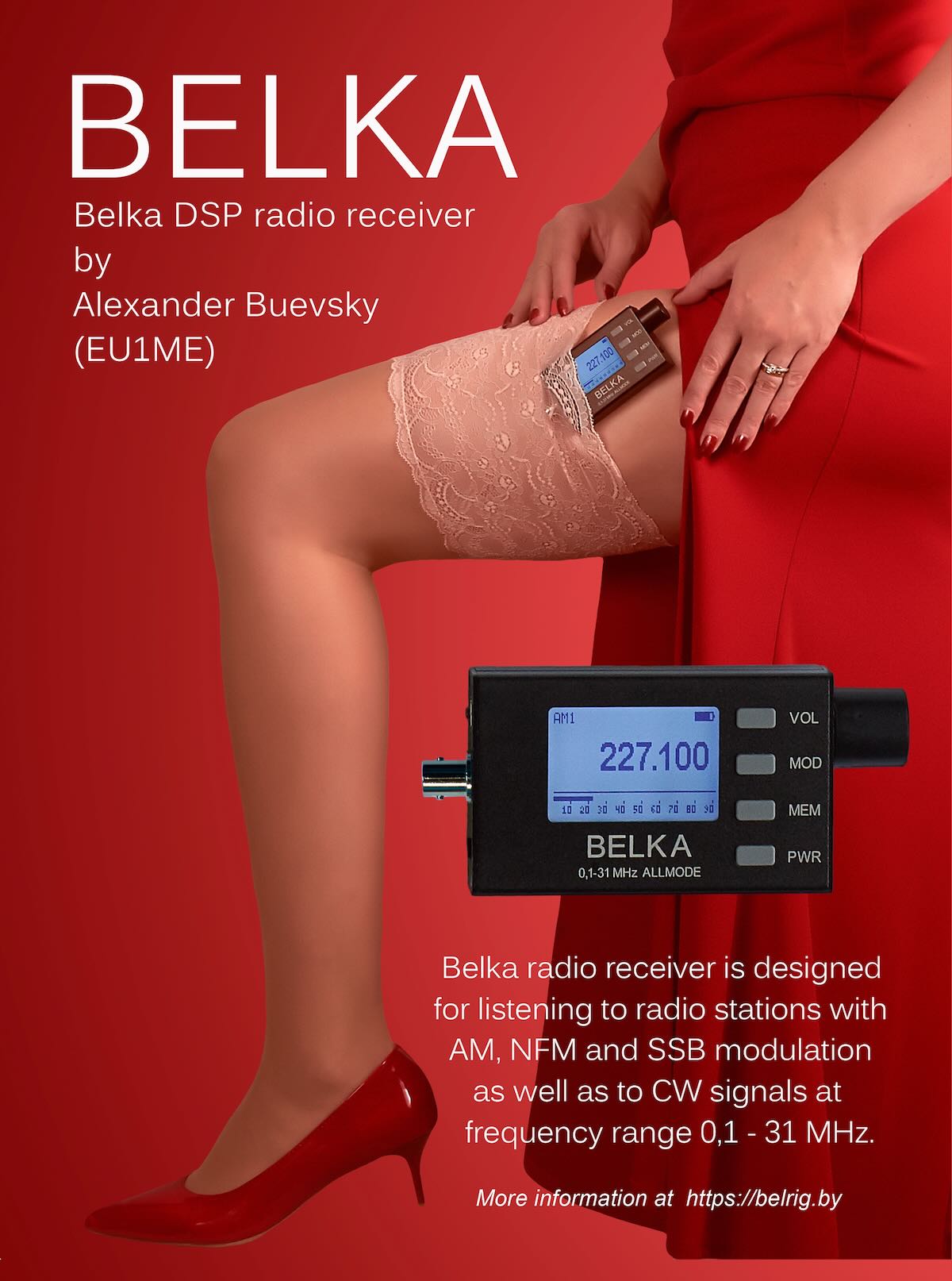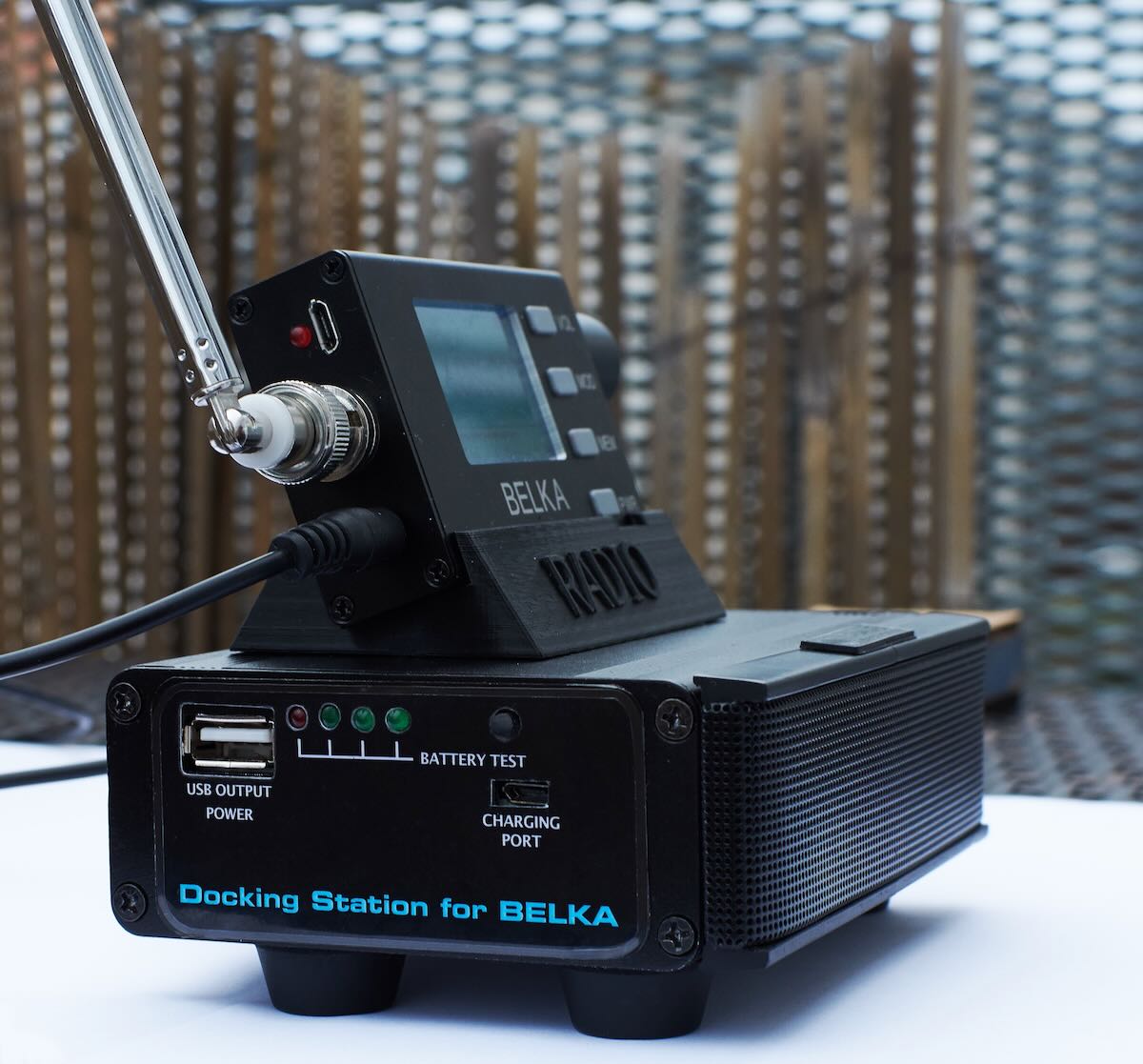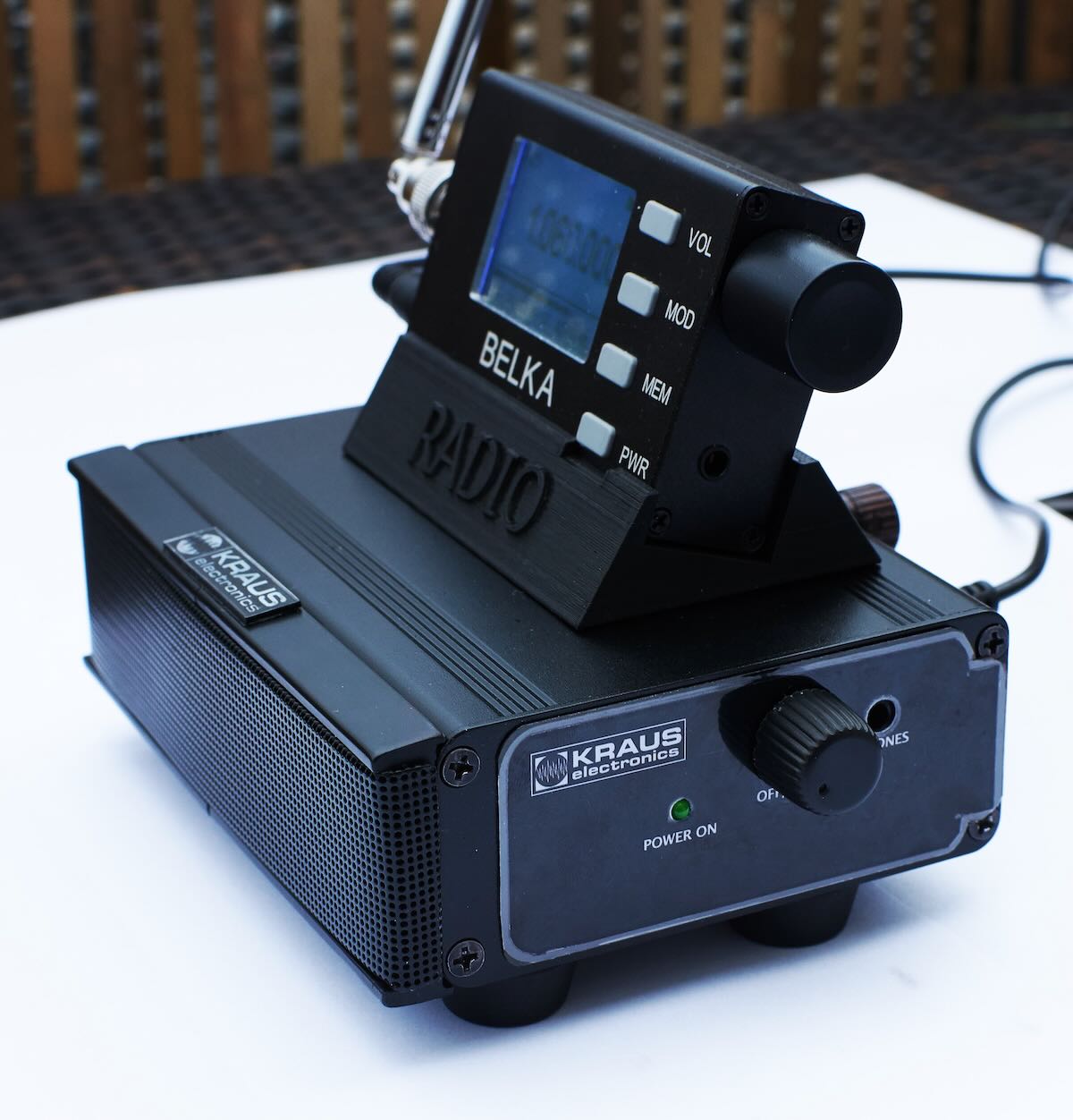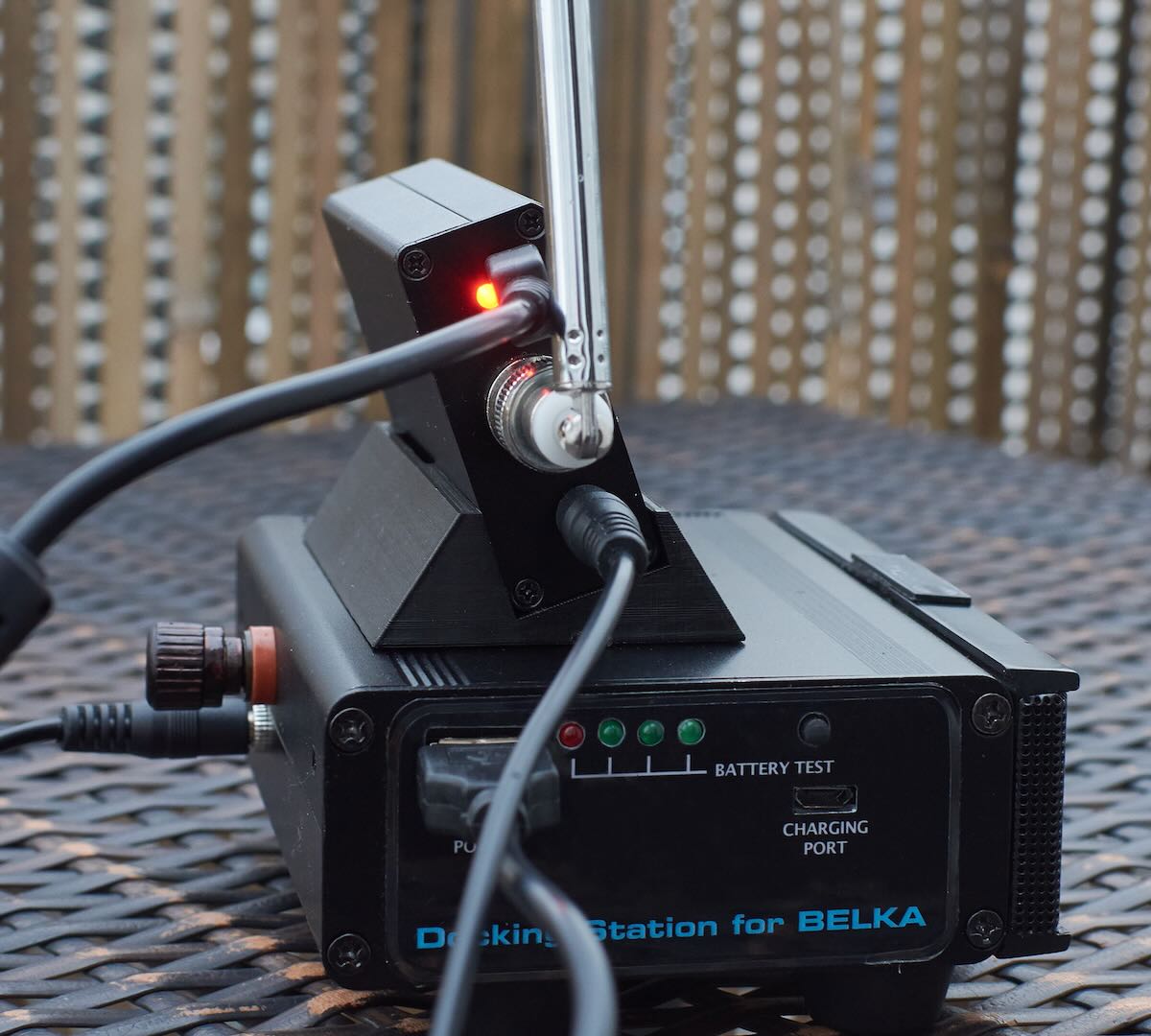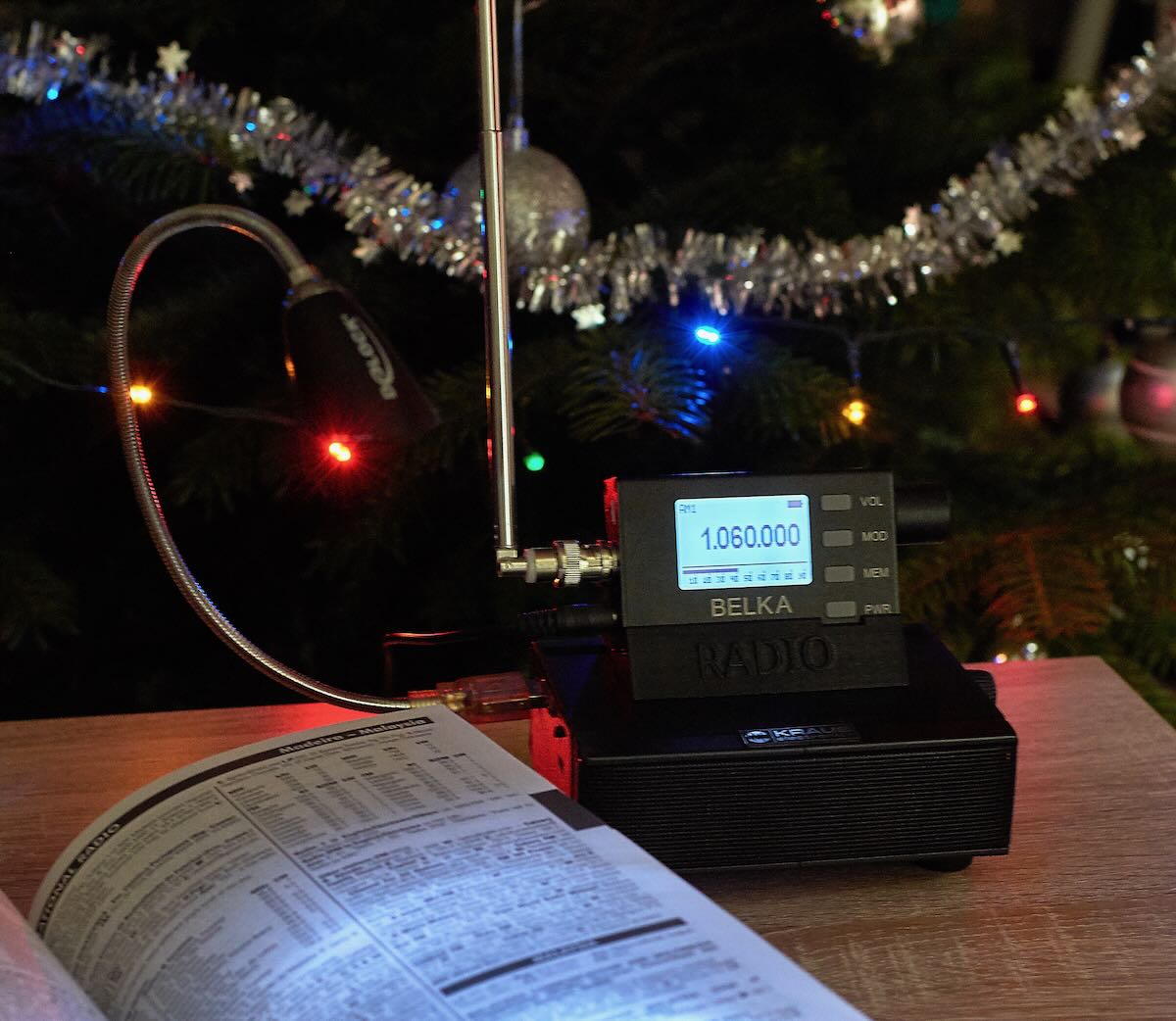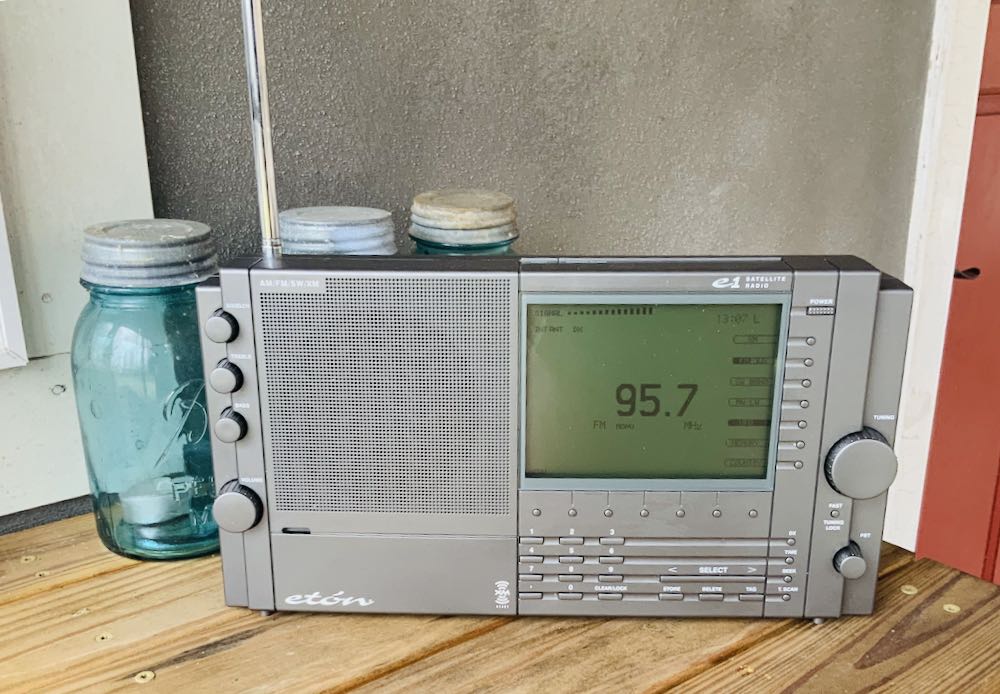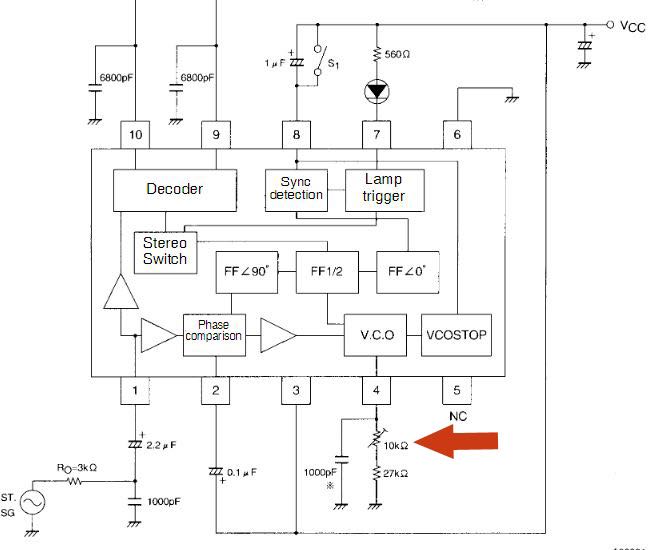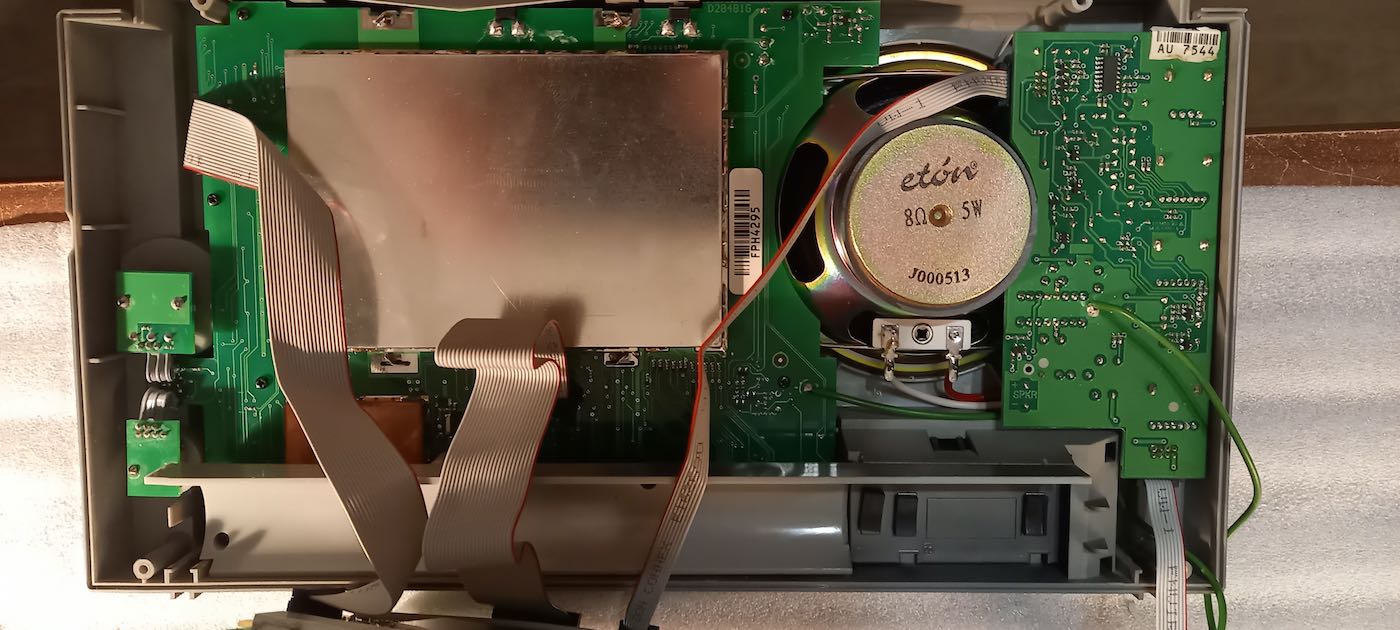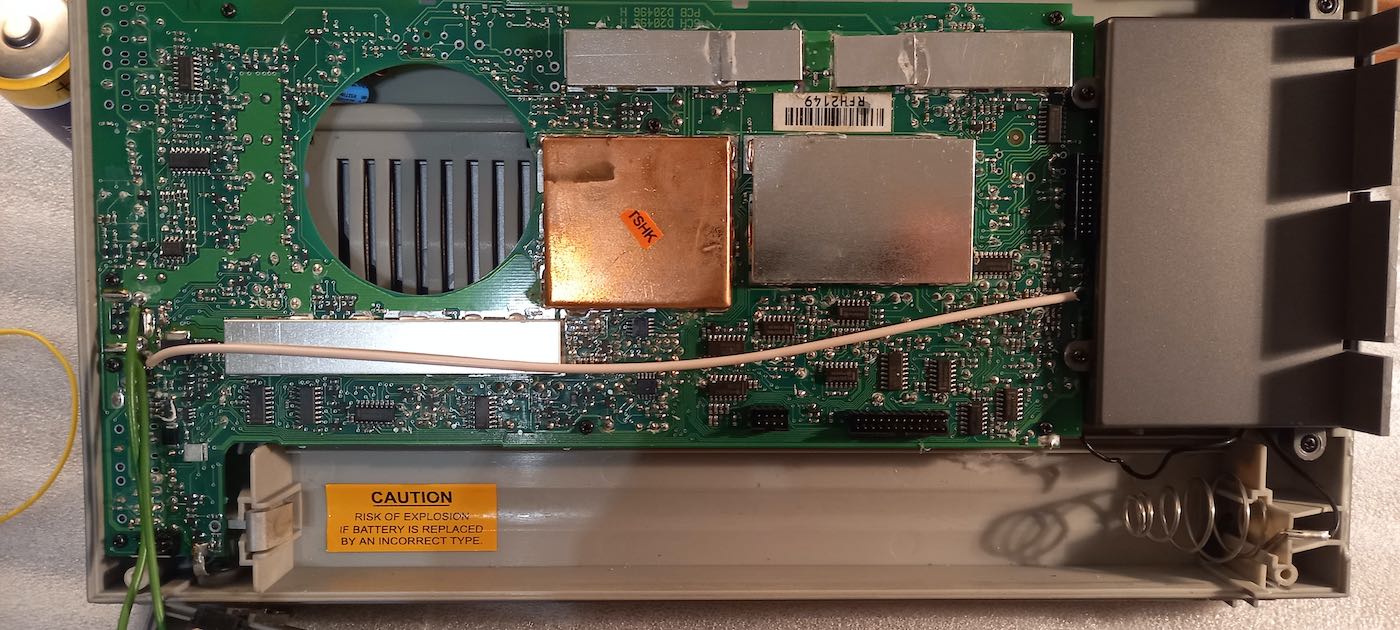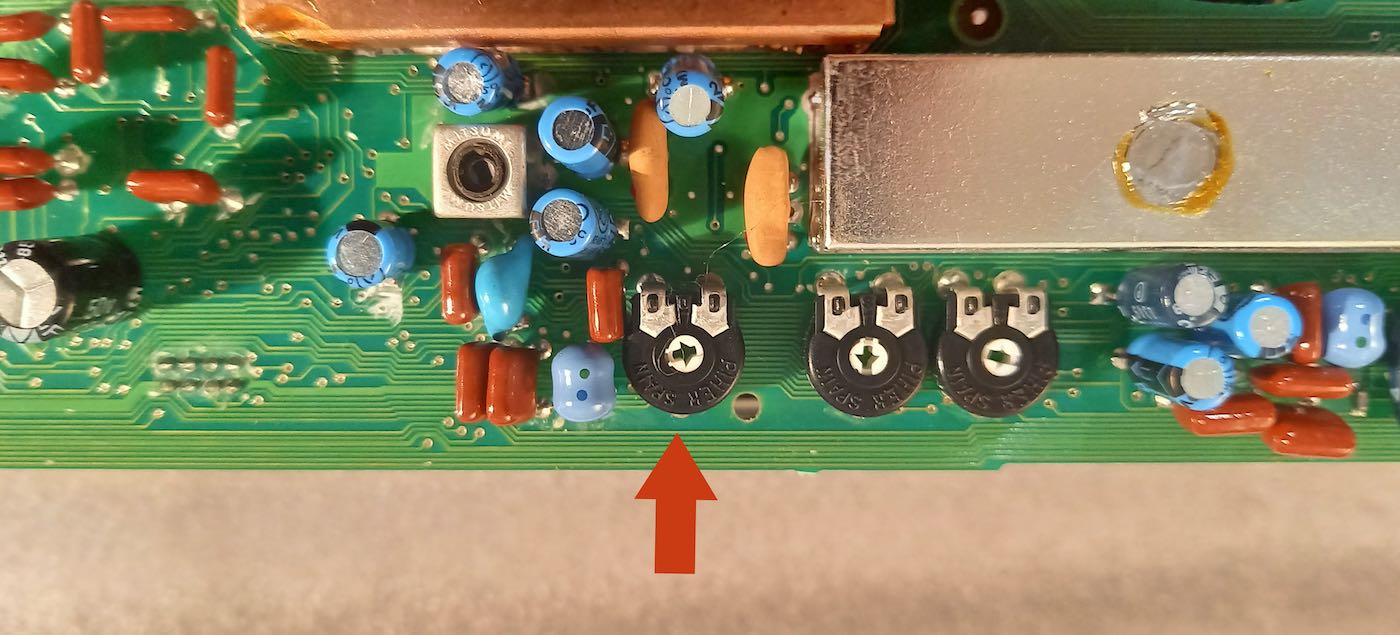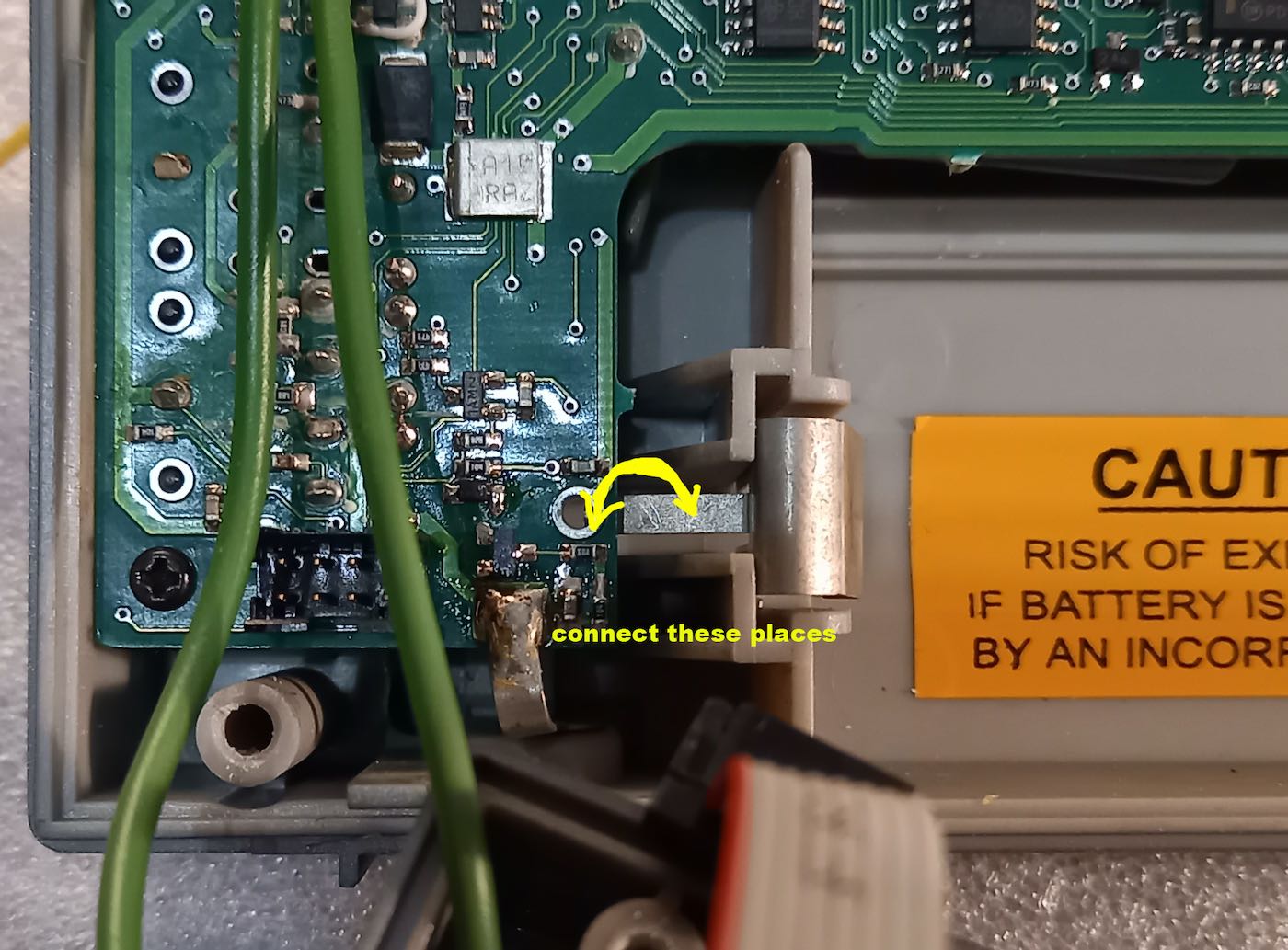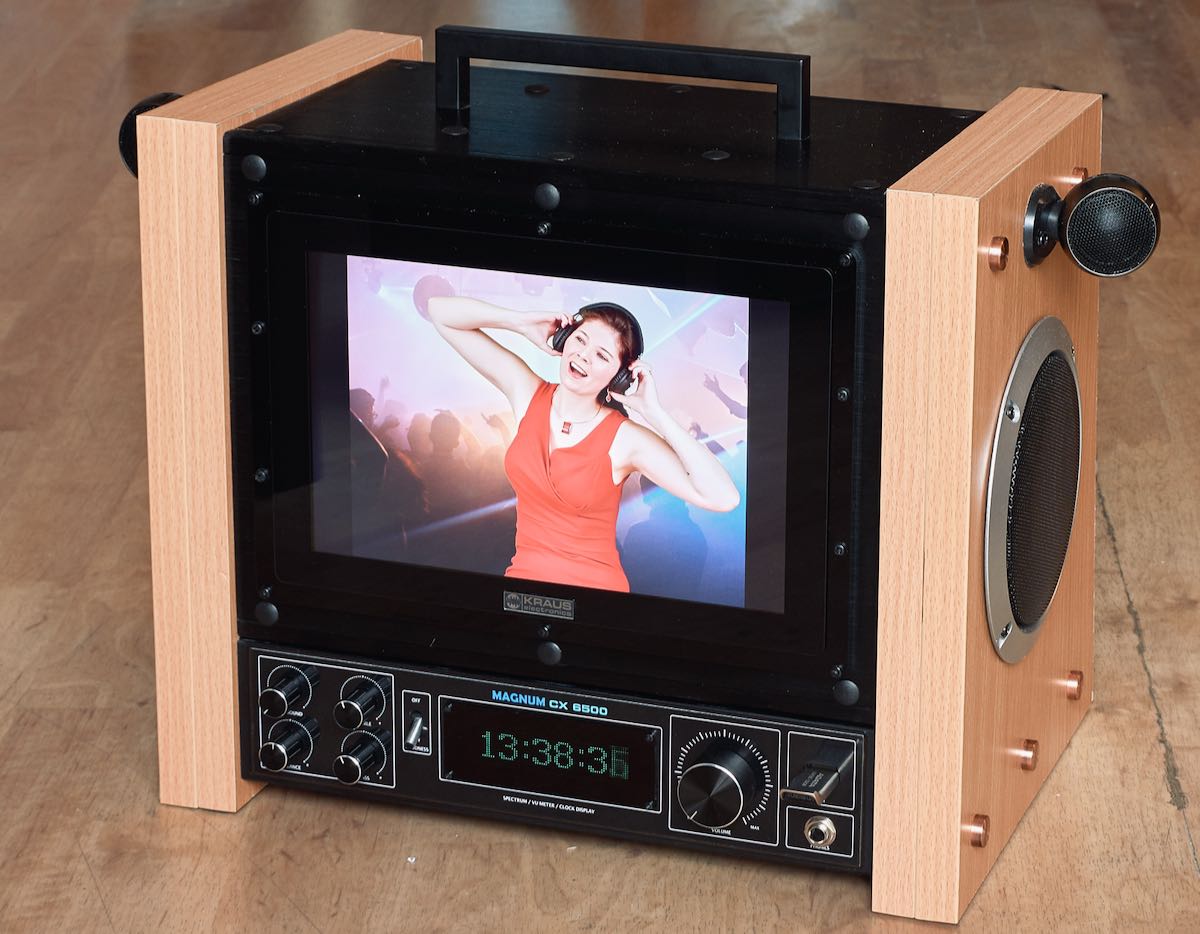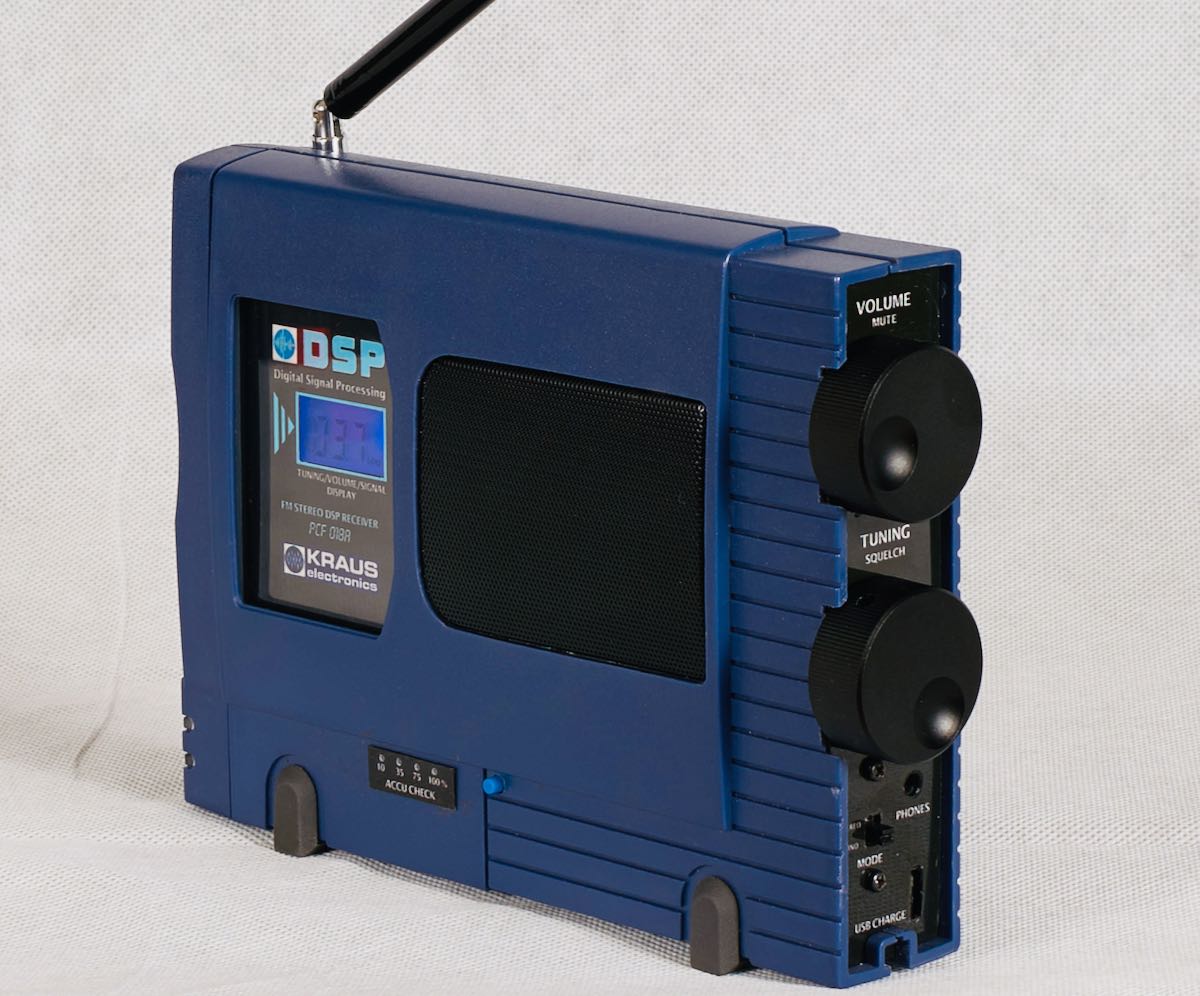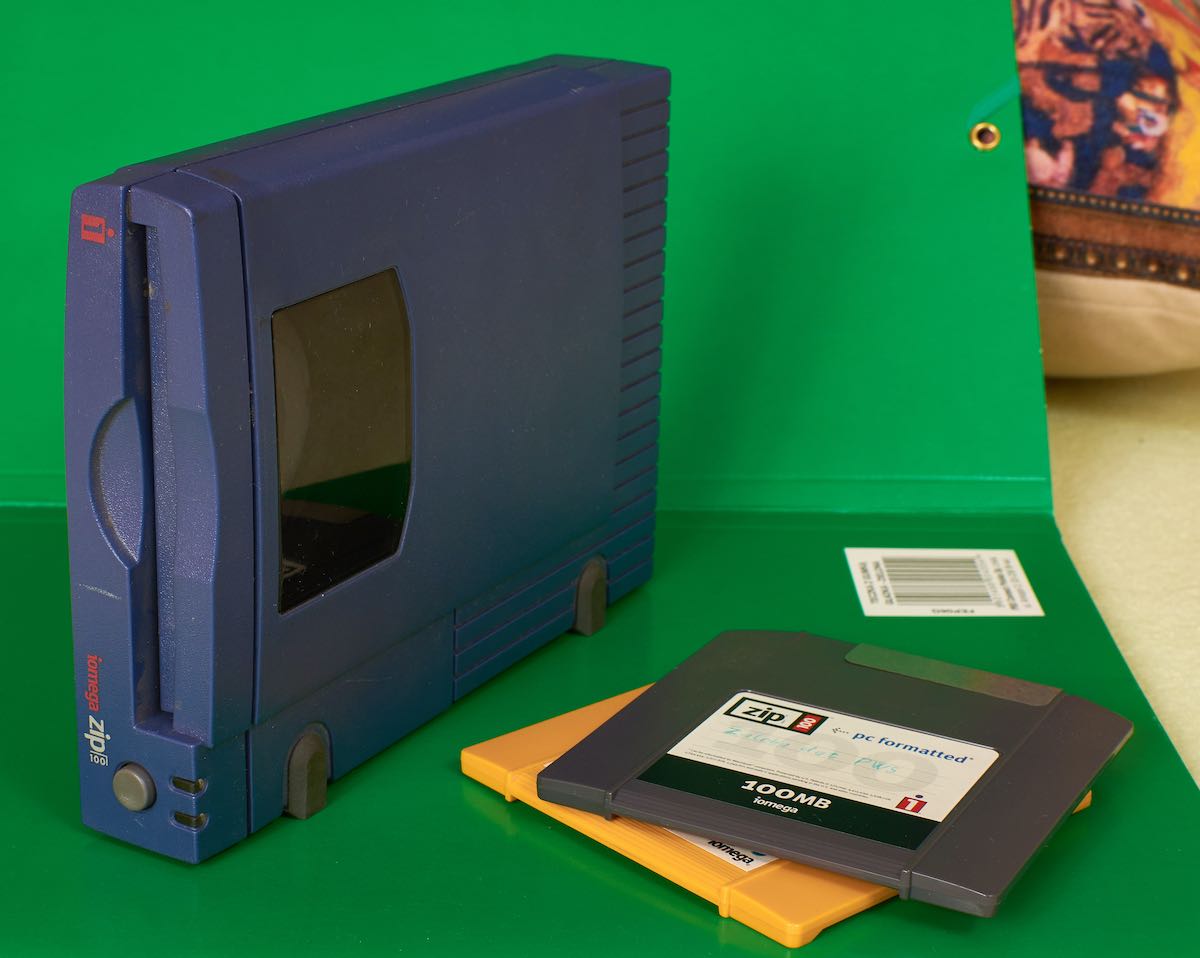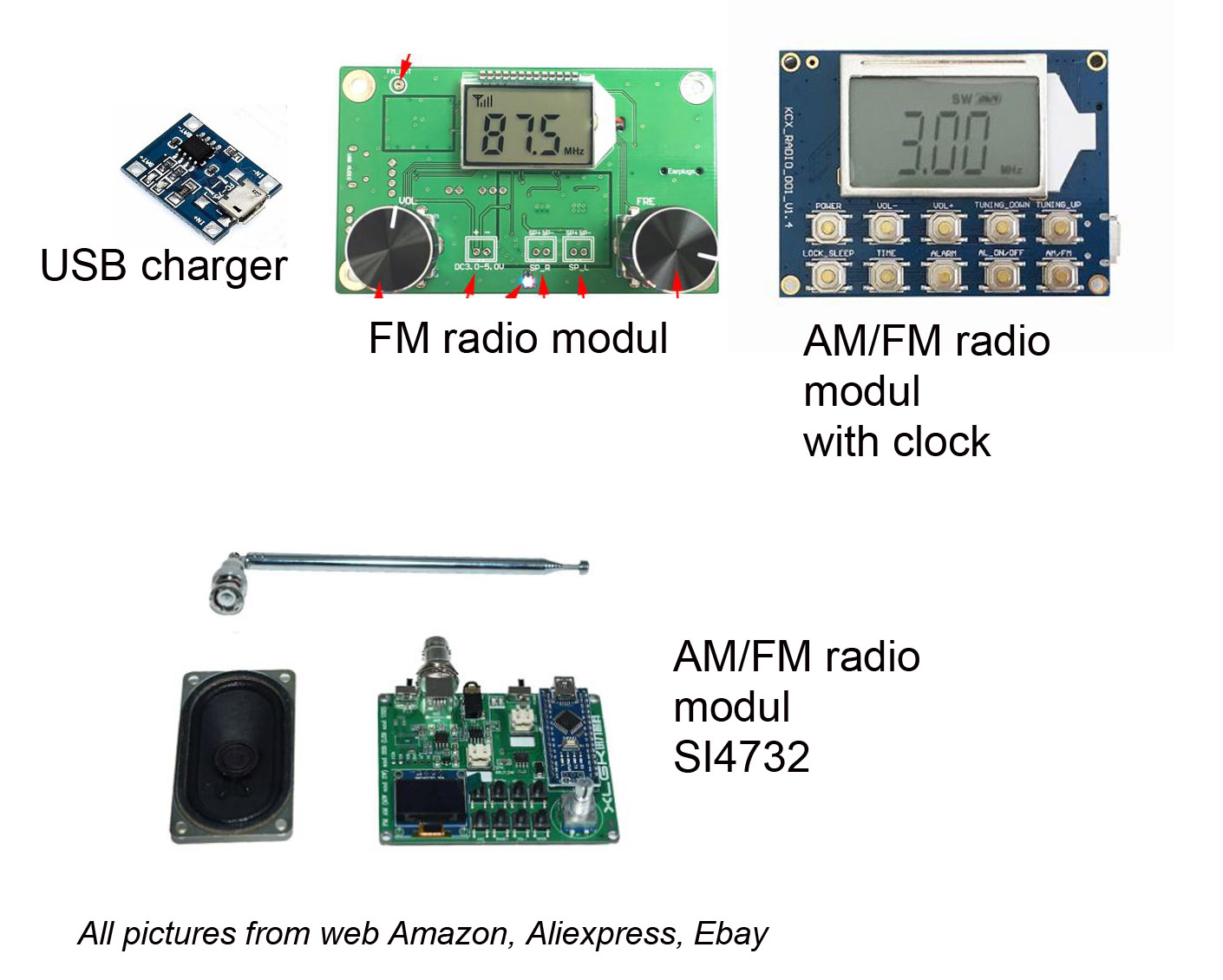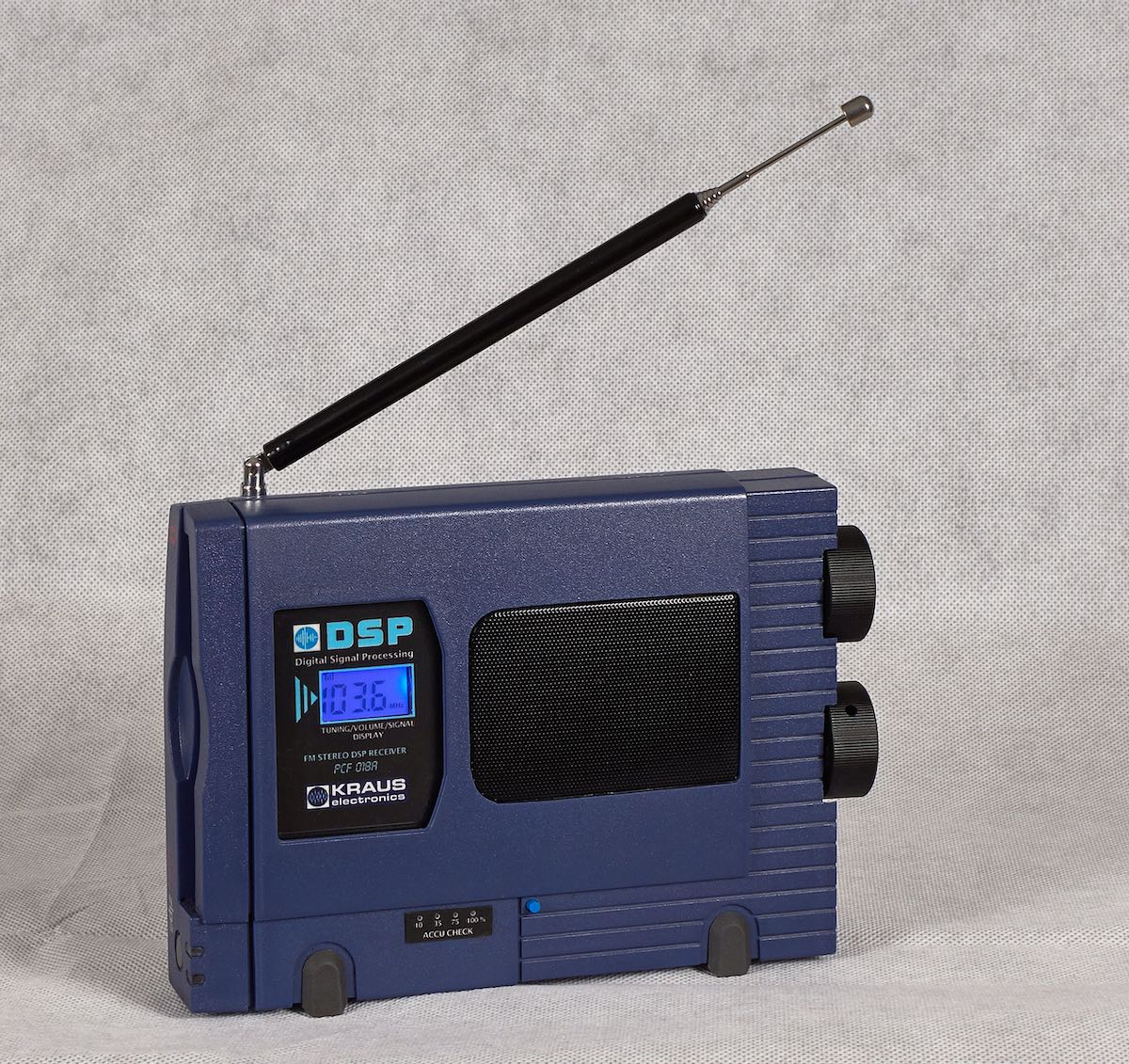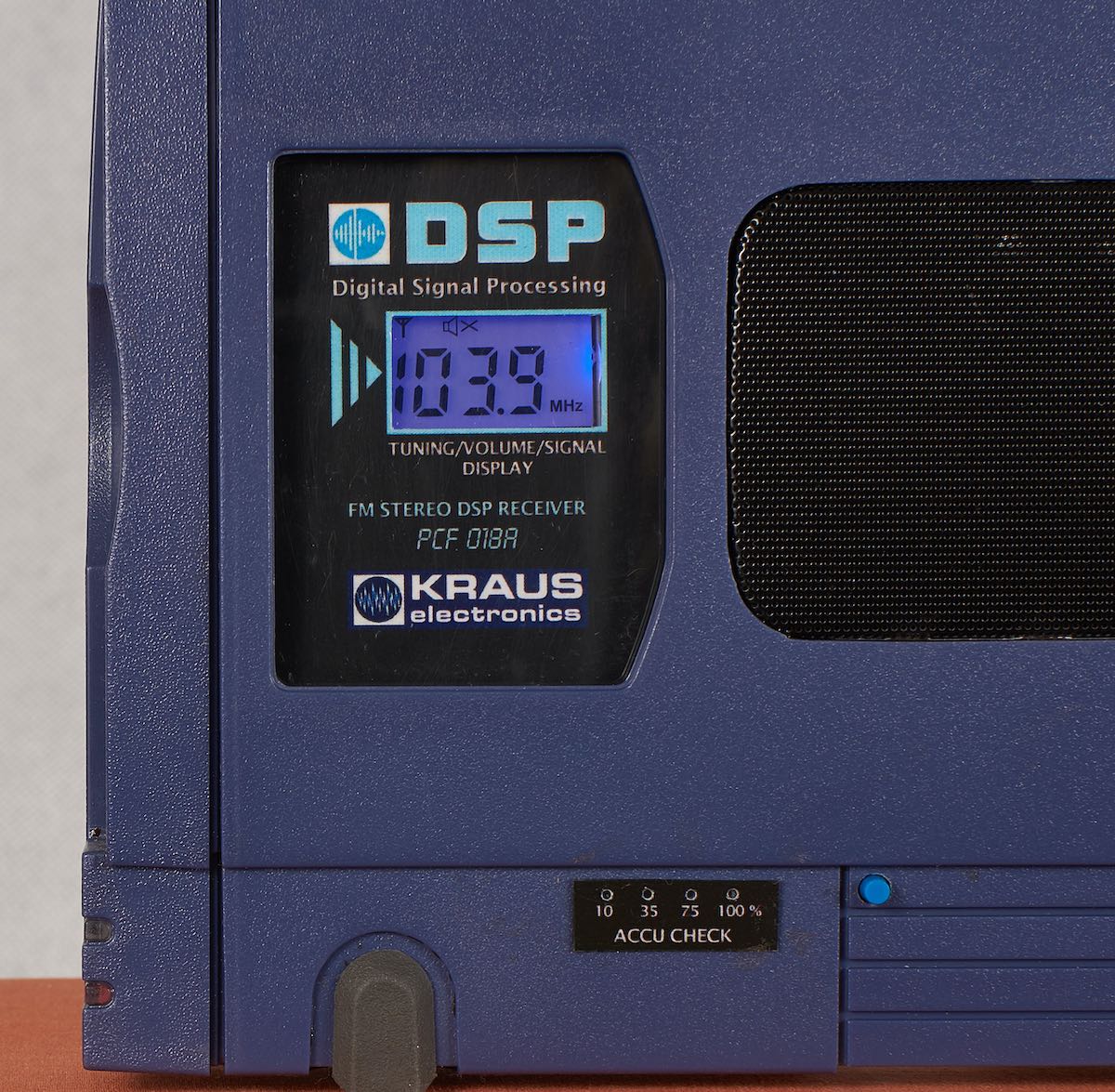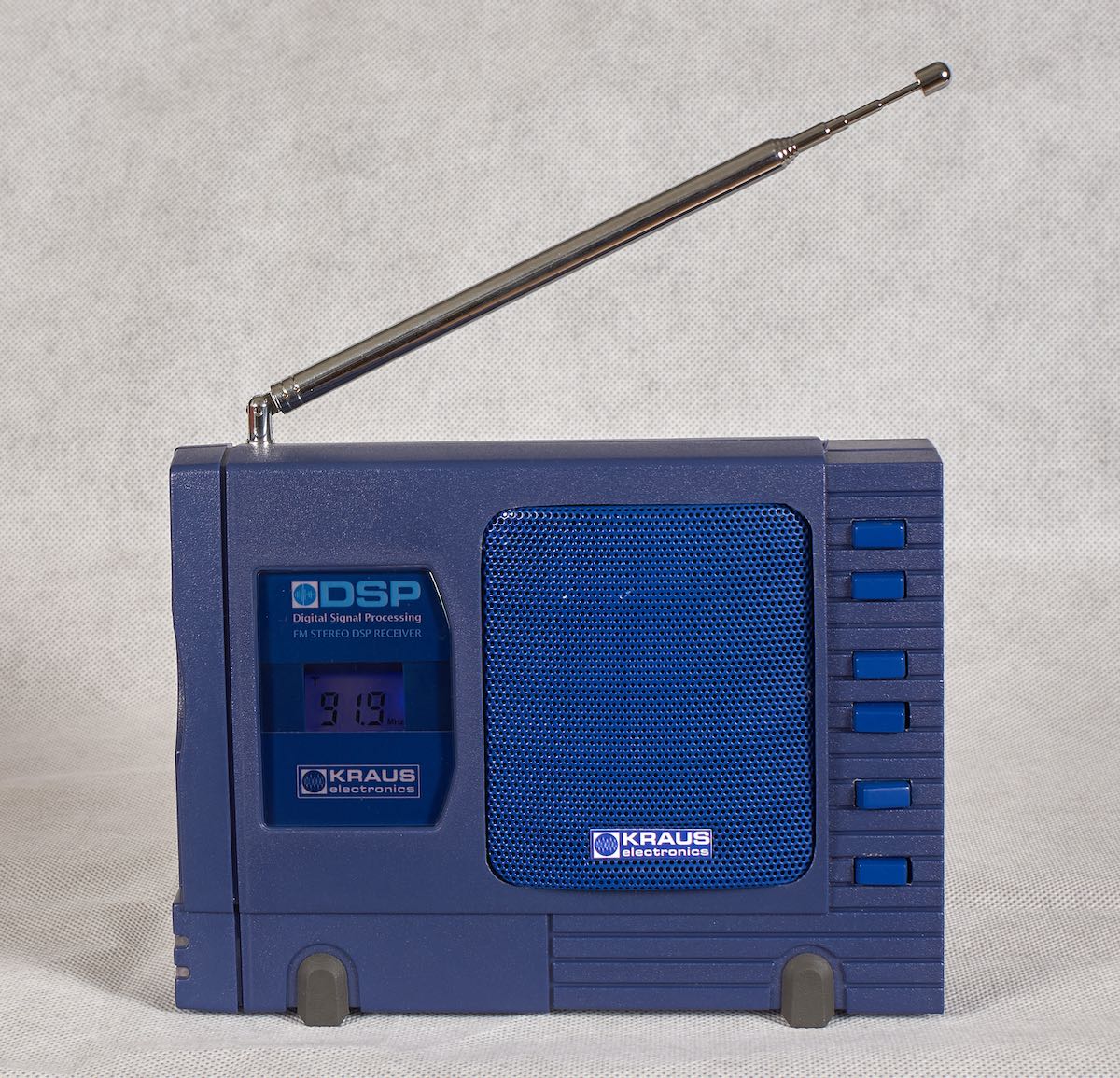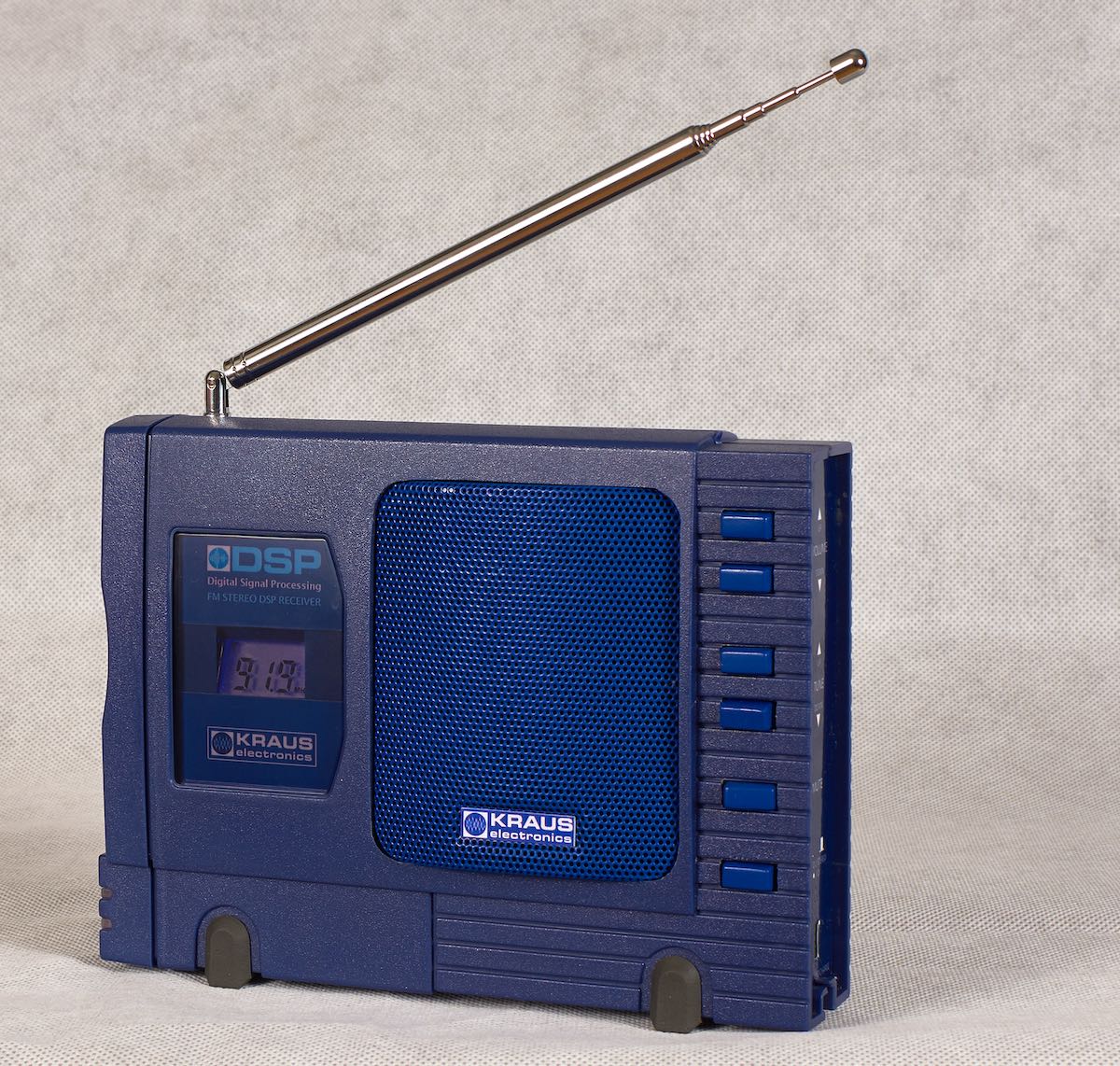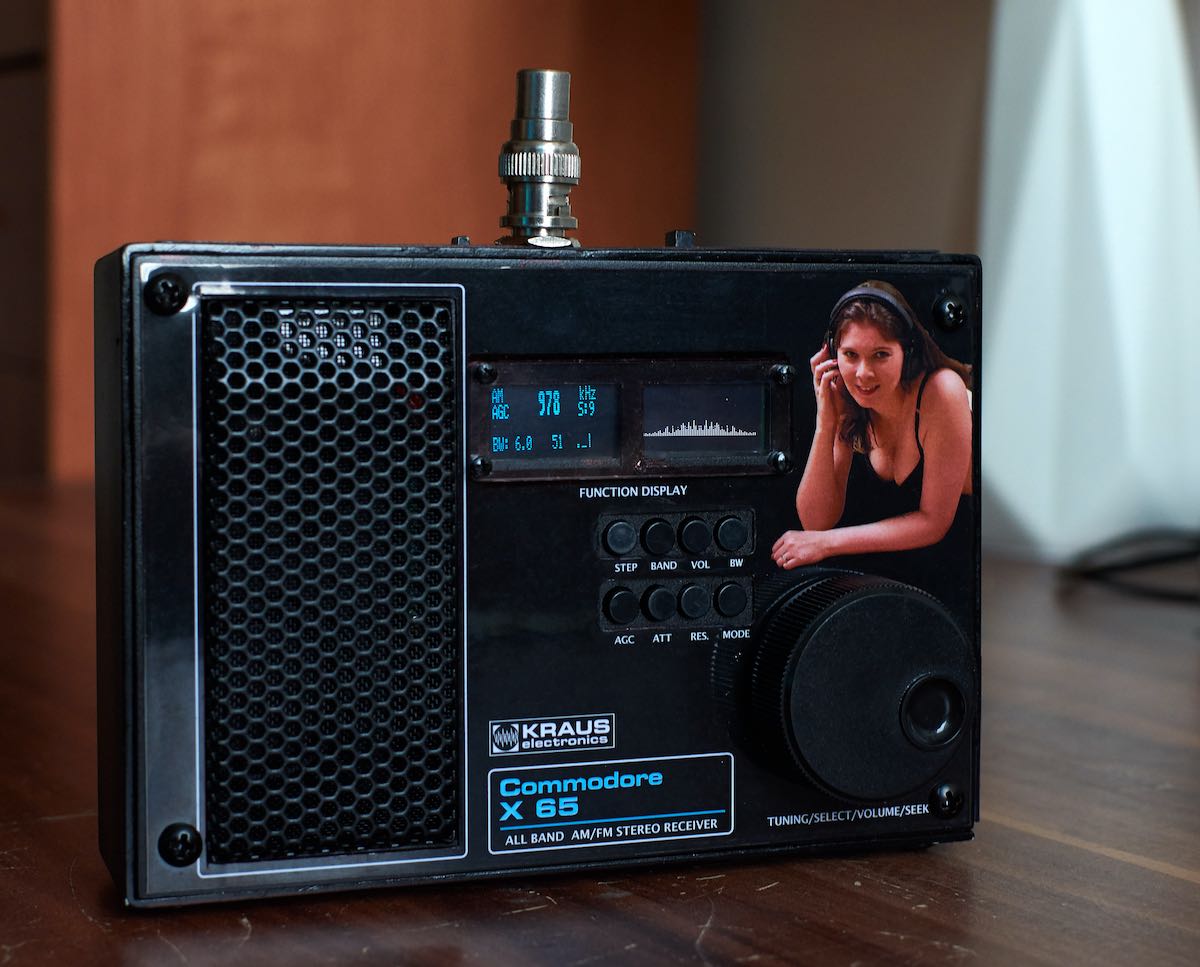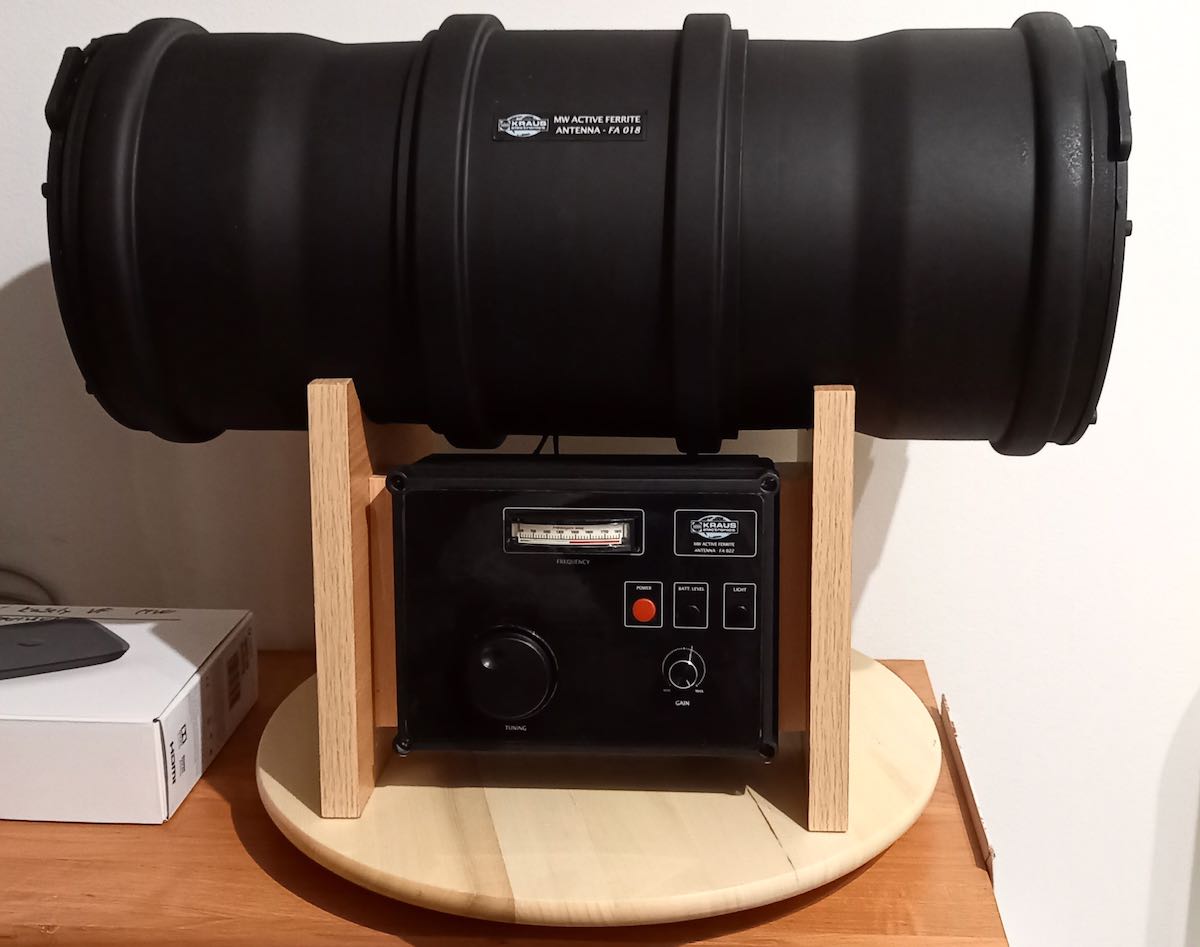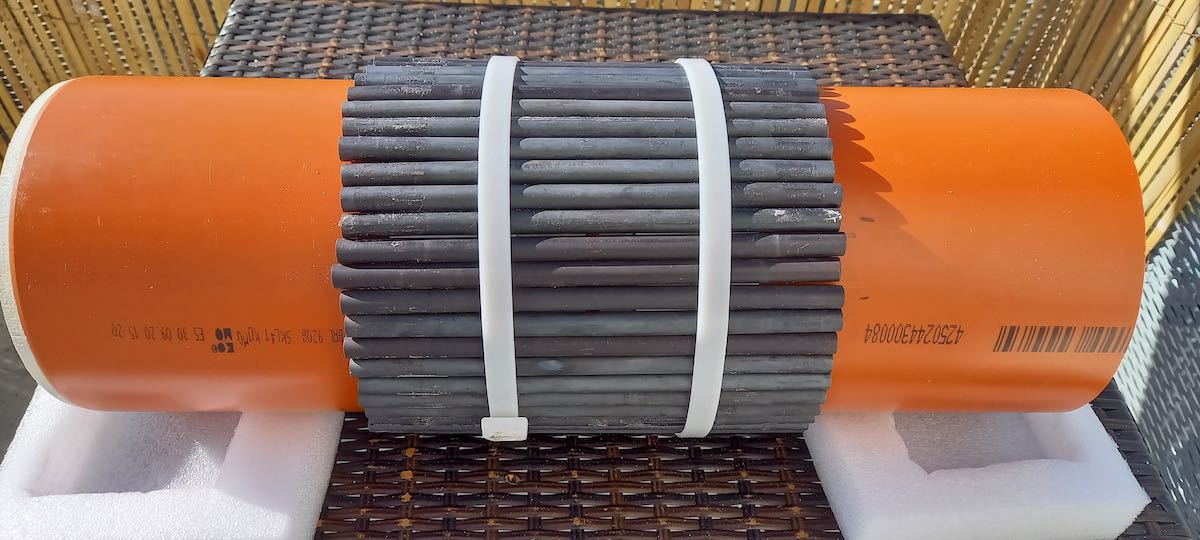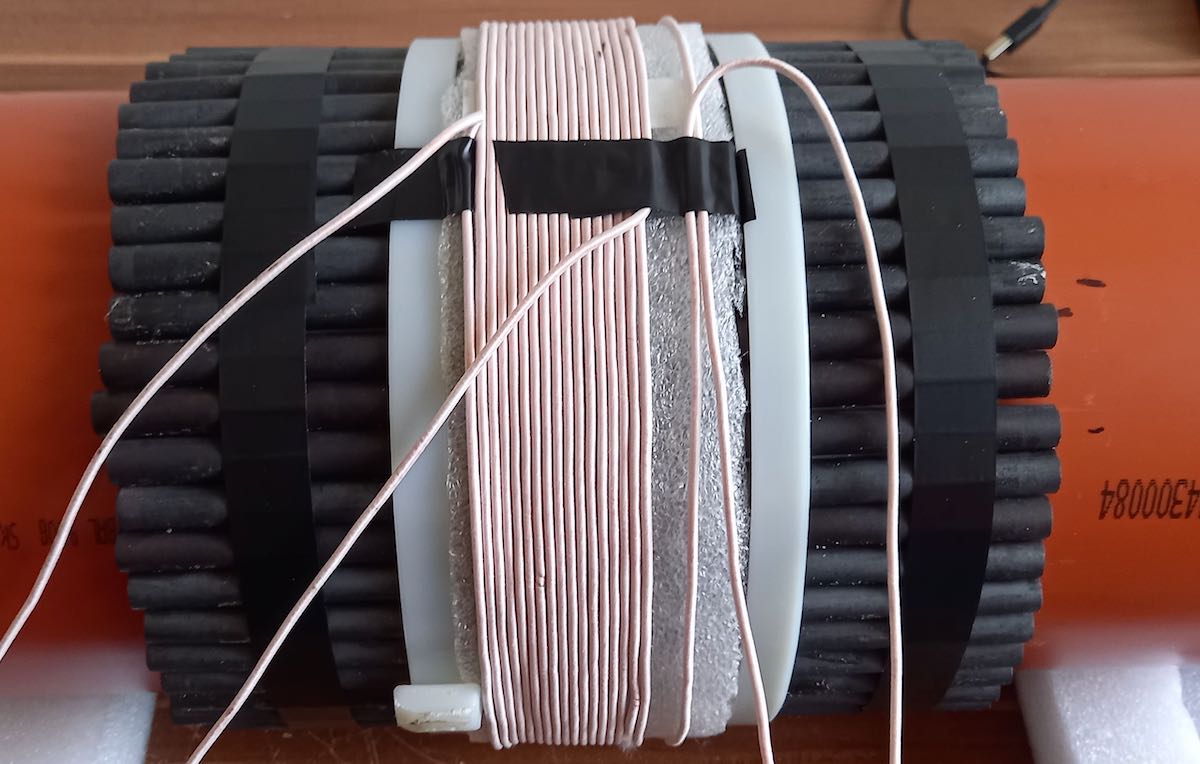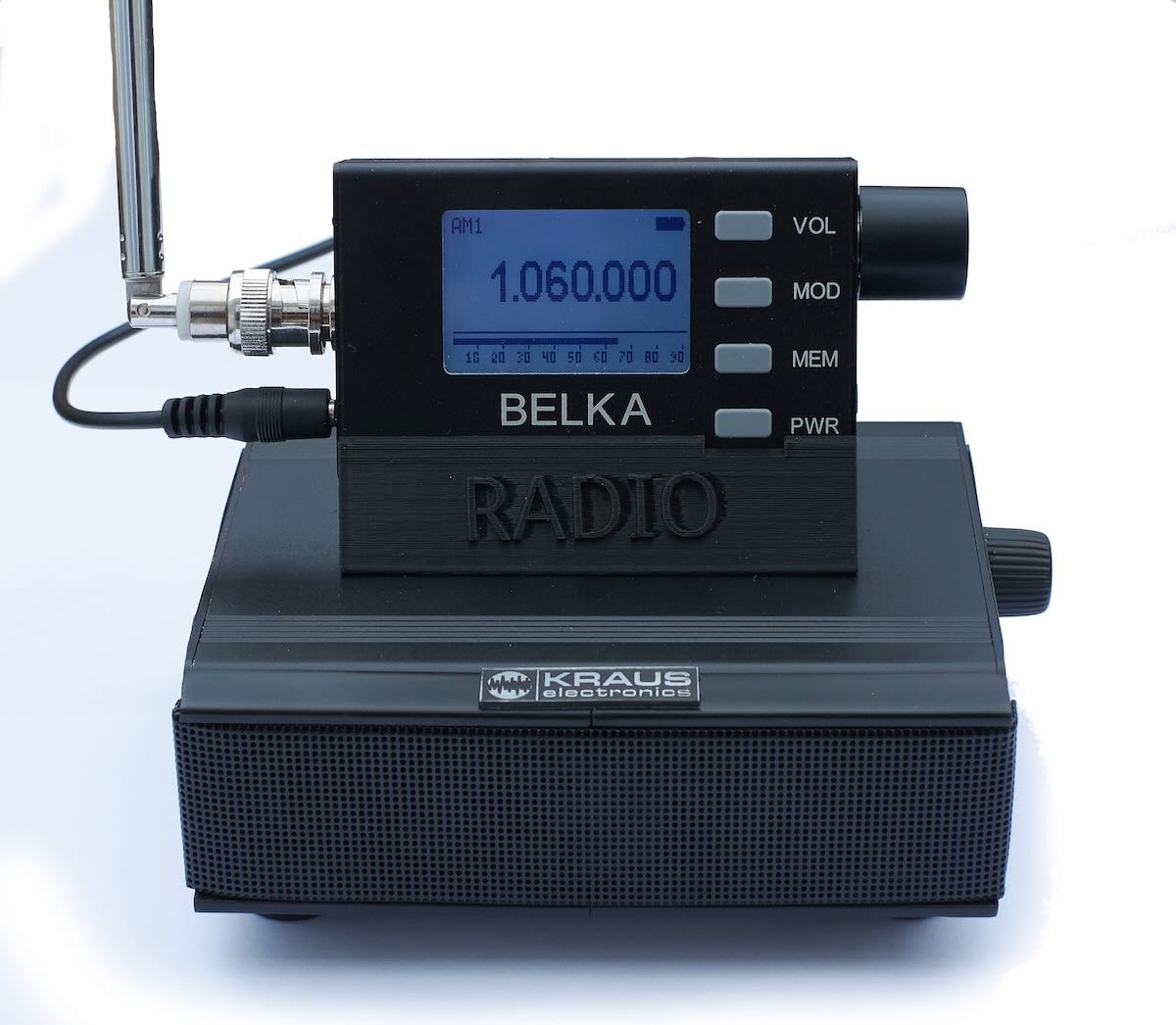 Many thanks to SWLing Post contributor, Pavel, who shares the following message and images. Note that this message was originally sent to me prior to Christmas, but never arrived in my inbox. Thank you, Pavel, for the follow-up:
Many thanks to SWLing Post contributor, Pavel, who shares the following message and images. Note that this message was originally sent to me prior to Christmas, but never arrived in my inbox. Thank you, Pavel, for the follow-up:
Hi Thomas,
First of all, I wish you and your entire family and all blog readers a wonderful rest of the Christmas holidays, all the best for the new year 2023, lots of health and well-being and many beautiful moments listening to the radio.
Some time ago I became the owner of the last type of Belky. I’m excited about her. So I immediately made an advertising poster with my wife and Belka :-).
I made a small docking station for the Belka – it has a built-in stereo amplifier, speakers and a battery with a charging circuit and a Dc-Dc converter for emergency charging of the Belka in the field. The status of the battery is indicated by LEDs. The Belka holder itself is made on a 3D printer.
Maybe it can serve as inspiration for blog readers.
Hi
Pavel Kraus
Thank you for sharing this, Pavel. We all love both your creativity not only in your photos, but the amazing radios you produce. We love how you use your wife as your model in your work!

